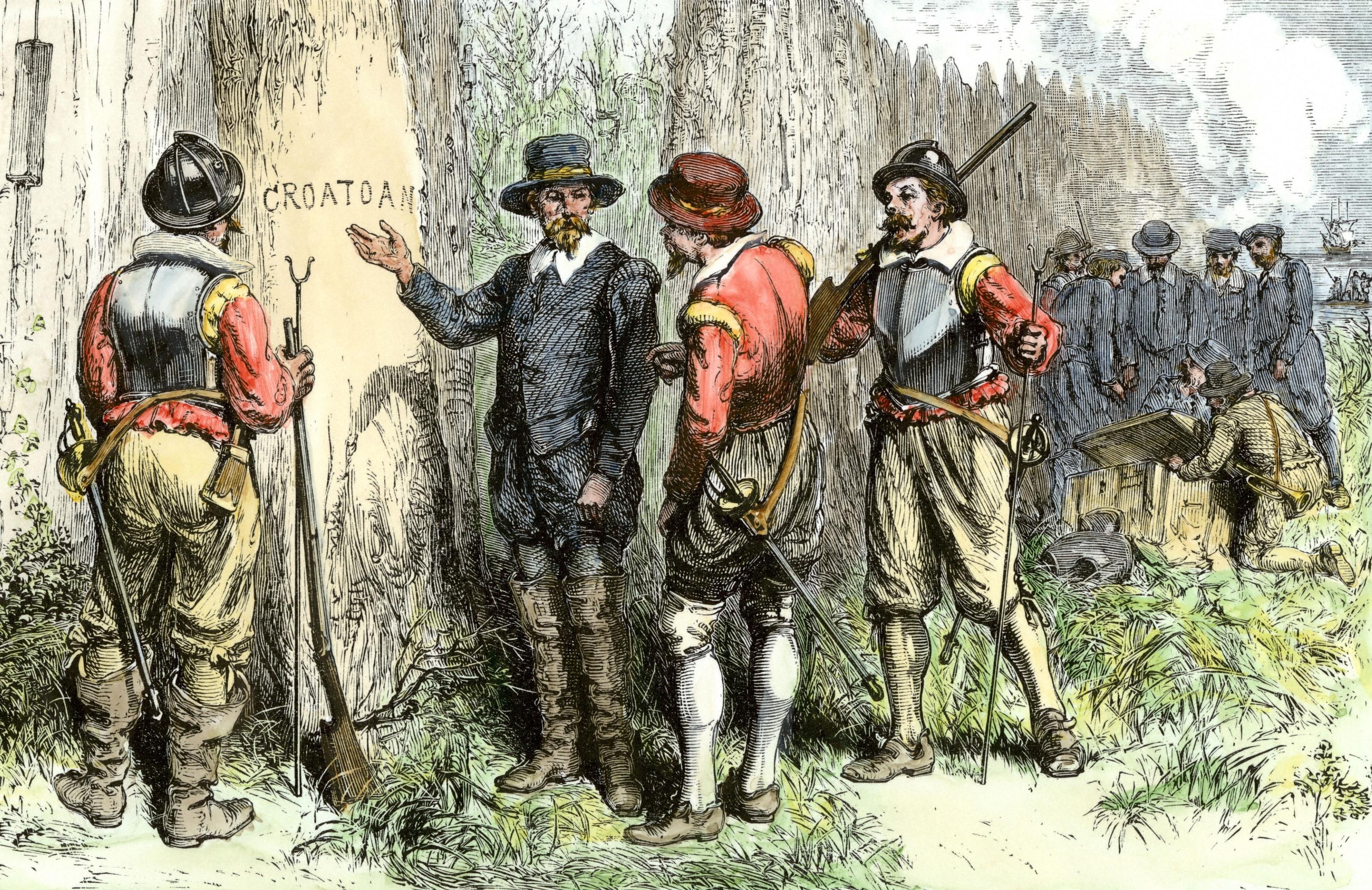
The Lost Colony of Roanoke: America’s Most Enduring Unsolved Mystery
Imagine stumbling upon a deserted village, where homes are abandoned, belongings are left behind, and the only clue to the disappearance of the inhabitants is a single, cryptic word etched into the trunk of a tree.This is not a scene from a horror movie, but a real historical event that has baffled historians and amateur sleuths for centuries.In 1590,a group of English settlers vanished from Roanoke Island in North Carolina,leaving behind a mystery that has become one of the most infamous unsolved enigmas in American history. What happened to the Lost Colony of Roanoke? Did they succumb to disease,get killed by Native Americans,or was it somthing more sinister?
To understand the magnitude of this mystery,we need to rewind to the late 16th century,when England was eager to establish a foothold in the new world. Sir Walter Raleigh, a charismatic and enterprising courtier, had convinced queen Elizabeth I to fund an expedition to North America.In 1585, Raleigh sent a group of settlers to Roanoke Island, which was part of the vast territory he had been granted by the Queen. the first batch of colonists was led by Ralph lane, a seasoned soldier, and included a young artist named John White, who would later become the governor of the colony. Initially, the settlers struggled to adapt to the harsh surroundings and relied heavily on the local Algonquian tribe for food and supplies.However, tensions soon arose between the english and the Native Americans, and the colonists’ situation became increasingly precarious.
In 1586, Sir Francis Drake, the famous English privateer, arrived at Roanoke, and the struggling colonists decided to abandon the settlement and return to England with him. However, a new group of settlers, led by John white, arrived at Roanoke in 1587, with the intention of establishing a new colony. This group included White’s own family,including his daughter and granddaughter,who would become a key figure in the mystery. The new colonists faced numerous challenges, including a challenging relationship with the local Native americans and a lack of supplies from England. John White, who had been appointed governor of the colony, returned to England to procure more supplies, but his journey was delayed due to the English naval war against Spain. By the time he finally returned to Roanoke in 1590, the colony had vanished.
When John White arrived at Roanoke, he was met with an eerie silence. the colonists’ homes were still standing, but their belongings were scattered about, and there was no sign of struggle or violence. It was as if the settlers had simply vanished into thin air. The only clue left behind was the word “CROATOAN” carved into the trunk of a tree, and “CRO” etched into a nearby post. White believed that the colonists might have been absorbed into the nearby croatoan tribe, but he was unable to investigate further due to bad weather. The mystery of the Lost Colony of Roanoke had begun, and it would remain unsolved for centuries.
Some of the possible reasons for the colony’s disappearance include:
Disease and starvation: The colonists may have succumbed to disease or starvation due to their struggles to adapt to the new environment.
Native American attacks: The colonists may have been killed by Native Americans, possibly as a result of their strained relationships.
* Absorption into local tribes: The colonists may have been absorbed into the local tribes, including the Croatoan tribe.
Over the years, numerous theories have emerged to explain the disappearance of the Roanoke colonists. Some believe that they were killed by Native Americans, possibly consequently of their strained relationships. Others propose that the colonists succumbed to disease or starvation, or that they were absorbed into the local tribes. though, none of these theories have been proven conclusively, and the mystery remains as intriguing as ever. Archaeologists and historians have scoured the site, searching for clues, but the evidence remains elusive. In recent years, DNA analysis and other scientific techniques have been employed to shed new light on the mystery, but the truth remains stubbornly out of reach.
The legacy of the Lost Colony of Roanoke extends far beyond the mystery itself.The failed settlement marked the beginning of English colonization in North America,and it paved the way for the establishment of later colonies,including Jamestown and Plymouth. The Roanoke colonists’ struggles and ultimate disappearance also serve as a reminder of the harsh realities of early American history, where the pursuit of a new life often ended in tragedy.
In the table below, some key events and figures related to the Lost Colony of Roanoke are listed:
| Year | Event | Figure |
| — | — | — |
| 1585 | First batch of settlers arrives at Roanoke Island | Ralph Lane, John White |
| 1586 | Sir Francis Drake arrives at Roanoke, colonists abandon settlement | Sir Francis Drake |
| 1587 | New group of settlers arrives at Roanoke, including John White’s family | John White |
| 1590 | John White returns to Roanoke, finds colony vanished | John White |
The Lost Colony of Roanoke remains one of America’s most enduring unsolved mysteries, a haunting enigma that continues to captivate and intrigue us to this day.
#InfographicStory #LostColonyOfRoanoke #UnsolvedMystery #AmericanHistory #HistoricalEvents #DidYouKnow #TrueStory #HistoryNerd #mysteriousphenomena #RoanokeIsland #JohnWhite #SirWalterRaleigh #ColonialAmerica #Mystery #legend #Myth #AmericanMythology #HistoryBuff #DocumentaryStyle #Storytelling #FascinatingFacts #CrypticClues #TheInfographicsShowStyle








